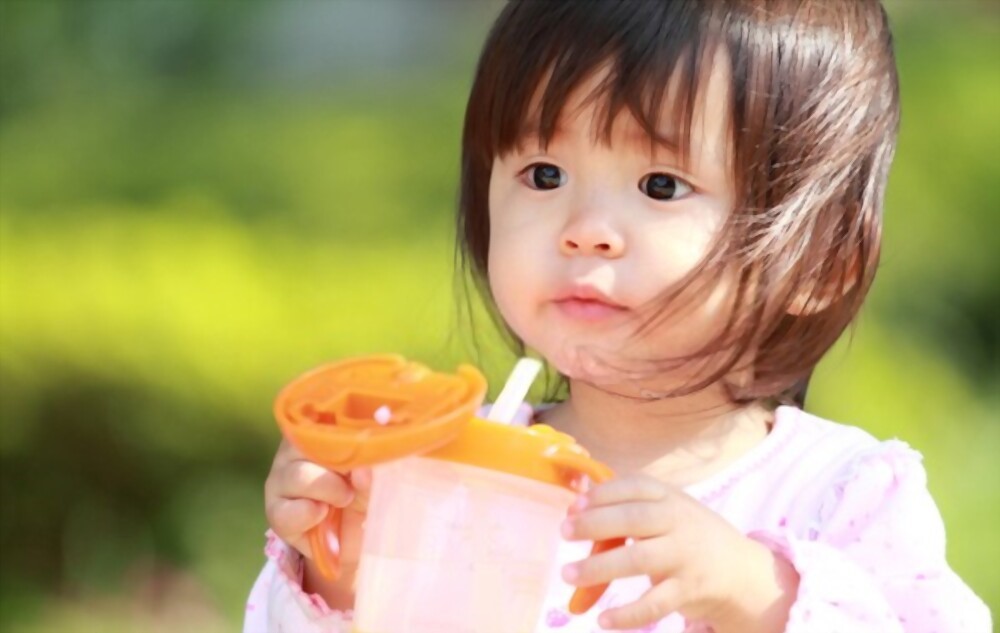What do I need to be aware of about cups for infants and toddlers?
When is it time to stop the use of bottles?
The benefits of having a variety of cups to aid in optimal oral motor development
What are the best types of cups for your infant?
If or not you choose to nurse through the toddler years, pediatricians suggest you wean your child off the bottle (of formula or breastmilk) and move to a toddler cup about 12-24 months old.1 The transition from bottle to toddler cups (for any fluid other than instantly from breastmilk) allows your baby to strengthen their facial muscles the tongue, mouth, and palate, which are linked with speech as well as feeding.2,3
Teach your child to make use of the cup
With the many options for cups available it can be difficult to decide which one to explore with your child. Every cup regardless of whether it is a straw, open, or sippy cup for toddlers will require your child to use their mouth and tongue differently than they would when drinking from bottles. The availability of a variety of toddler cup options allows your baby to develop new drinking techniques when they begin to move to a bottle.
By the American Dental Association, to assist your child to learn to sit, raise the cup and sip, search for cups with:
Cup with a Snap-On lid or screw-on lid, which has the spout but has no spill-control valve
Two handles on the cups
Cups with a base that is weighted to ensure they are straight and reduce the possibility of spills 3.
Training Cup / Sippy cup
A lot of parents buy a standard sippy cup because they’re spill-free and convenient to carry around, but they’re bottles for babies with a different style. Best Slow Flow Sippy cups require your child must suction – not drink – to draw all the fluid out. The goal is to switch from sucking (like into a bottle) to drinking (as you would do with cups). 5 5
Straw cup
Straw toddler cups can assist in the process of learning to sip but they also provide more practice for other aspects. This is since your child can drink from a straw cup even though they are still sitting and sucking but not sitting up straight or full-on tipping the cup towards their mouth.
Open cup
Some babies will go directly from a bottle into drinking from an unopened cup. you should consider this possibility also. Babies are developing enough to sip their drink from an open cup that is with a person holding it at approximately 6 months old. 6 When they can stand without assistance and put their lower lip to the cup’s rim You can try it by drinking from an open cup, bringing just a little bit of milk or water in your child’s mouth, then gently tipping it towards your child.
The practice of different cups around six months is a good way to make sure your baby can effectively transition off of the bottle before the time of their 1st birthday.
Which cup? Bottom line?
Sippy cups (without valves) should be used only for a couple of months to help children learn. Once your child can take the cup from the table and then tip it over to drink the liquid, an open container is next!
Straw cups can also be an effective tool for transition – however, there are some situations in which they’re useful, provided they’re only used infrequently. A straw cup could be an excellent alternative for a long car or plane journey to avoid spills. Also, you can think about a spout-type cup (without the straw inside) and will require your child to tilt the cup upwards to drink.
What can I do to change my baby’s habit of drinking from cups?
Try different varieties of cups
Certain kids require a gentler transition from bottle to a lower-spout toddler cup, whereas others are comfortable with the large leap between bottles (of formula or breastmilk) and an infant cup made of plastic that contains drinking water. Experiment with different cups to find out the one that is most suitable for your child.
Take the valves to prevent spills out of sippy cups
Do not worry too much about spills. Instead, let your child practice drinking from the cup. The spill-proof valves in toddler sippy cups can hinder your child’s drinking success as they make it more difficult for the child to take any liquid from the cup. They also encourage sucking while drinking. If you remove the valve that prevents spills or selects a cup that does not have one, your child must learn that they must tip their cup over and drink to extract the liquid out, similar to sipping from an opened cup.
Let your baby sip water from your cup
Practice makes progress! Let your 6-plus-month old baby drink from a glass of water that you hold. You can also try holding a tiny child-sized cup and pouring some tablespoons of water.
Your baby’s oral motor control so that they can learn how to close their lips to the sides of an open cup. take a sip of water, maintain the seal when swallowing, and remove the cap from the mouth. 7 There will be plenty of drips dripping down the baby’s shirt and spilling out at first however, making a messy mess is part of the enjoyment.
Formula or breastmilk in one cup
Certain babies have an easier transition to an entirely new cup when you give them the familiar flavor. If your baby is exclusively or partly bottle-fed (as opposed to being exclusively breastfed) you can give your child half their breastmilk or milk in bottles as well as the remaining ounces of formula in cups.
